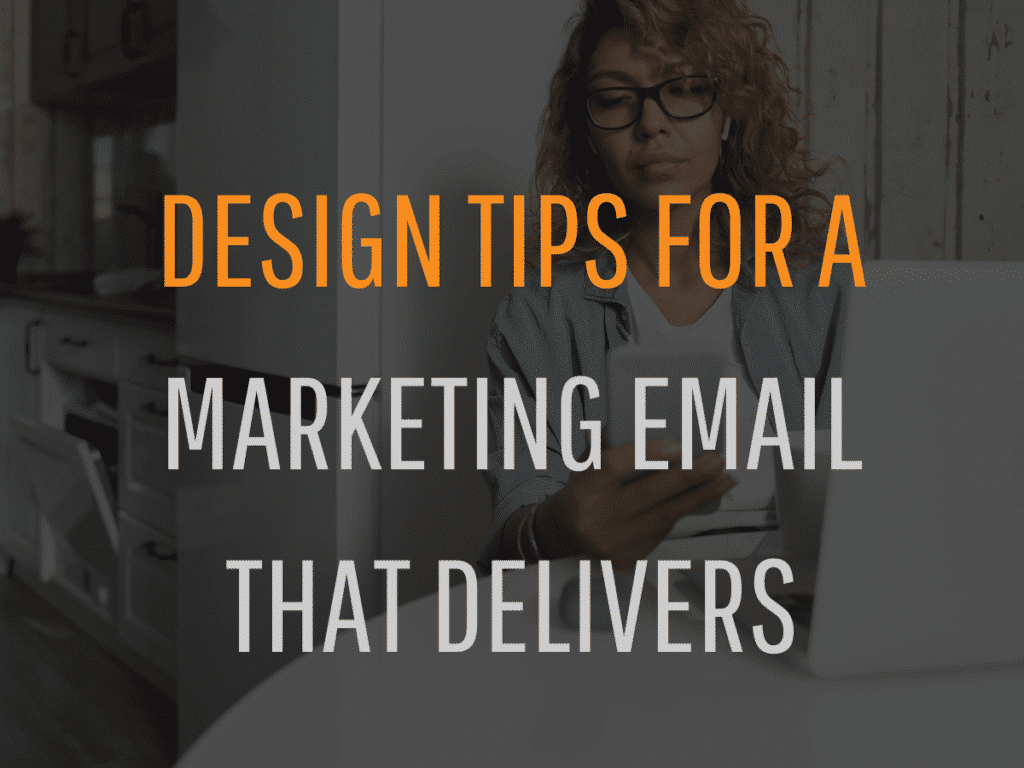Increase click-through rates and engagement with these nine best practices
If you run a business, you can reach just about any target audience with an email. Statista projects that the worldwide number of email users, estimated at 3.9 billion in 2020, will increase to 4.3 billion people by 2023. According to 2019 data from the Content Marketing Institute, 87 percent of marketing professionals use email as an awareness, engagement, and conversion strategy. What’s more, email marketing is so popular because it works, delivering a staggering $38 return on every dollar invested, according to data from Hubspot. Whether you’re launching a brand-new email newsletter or refreshing your entire email marketing campaign, these best practices for design will get your content noticed.
Make your mark
Every marketing email sent by your business should position your brand as an authority in your niche. All the effort you put into crafting quality content goes to waste if the reader doesn’t know right away who sent the email. Your logo should be one of the first things your reader sees to establish a sense of trust and brand awareness. The send field of your email should have a recognizable, trustworthy name that readers will associate with you. Use the same color palette and font families you use on your website and in other marketing materials.
Social proof from user-generated content also reinforces your brand’s credibility by including personalized reviews and UGC social media posts in your emails. Customers trust reviews from other users above almost any other factor when deciding whether to buy a new product or service. To that end, try incorporating relevant buyer reviews across the email journey—a powerful method to drive conversions.
Guide readers with a visual hierarchy
Every marketing email should lead subscribers to the action you want them to take with a story that keeps them engaged. Use heading levels and page placement to signal the most important information for your reader. People tend to place a higher value on objects that are larger, so consider displaying the most important information as larger elements or in bigger, bolder fonts.
Contrasting colors also help key elements of the email stand out from the finer details. Using plenty of white space delineates between sections so readers know when you’re shifting to a new topic.
Each email sent from your brand must have at least one clear, actionable call to action (CTA). Without a well-defined CTA button, your reader may be unable to take the next step and will quickly abandon the effort to do so, jeopardizing your chance for a conversion.
Pay attention to accessibility
Like your web content, marketing emails should be accessible to readers who have disabilities. Taking steps to ensure the readability and clarity of your content will benefit your entire audience without potentially alienating those who have concerns such as low vision.
For best results, be as descriptive as possible in all subject lines, headings, and subheads. This helps those who use screen readers decide whether to open your email. Avoid sending image-only emails, which can be difficult for assistive devices to interpret. Use a legible font that is at least 14 points in size. Use left-justified rather than centered text for the best readability.
Personalize your approach
With dynamic content, you can personalize communications with your customers based on their behavior. Show them educational content, recommendations, and product offers that highlight their interests as confirmed by past clicks.
Interactive elements also help your email feel less like an ad and more like a message your reader looks forward to receiving. Some of the most successful examples include surveys, live polls, click-through offer reveals, product carousels, and animated CTAs.
Optimize for mobile

Americans open more than half of their emails on mobile devices, so prioritize responsive design for every message you send. With a responsive approach, the message layout automatically adapts to the size of the reader’s screen without compromising good design principles.
Grabbing reader attention quickly is even more important on a mobile platform. Reduce your text to the bare minimum with snappy copy that gets to the point. Your subscriber will move on if you don’t entice them to click through within 8 seconds or less. Other tips for mobile optimization include:
- A vertical, “top-down” approach to design
- Large headlines, font, and CTA
- Plenty of white space for readability
Size images appropriately so they load quickly on any type of device. Start with high-quality PNG files of engaging images, then minimize size to no more than 650px. For the best loading time, your image file size should be under 150 kb.
Remember critical details
Avoid sending a brand email without these elements:
- Text or visual outline at the beginning of the email to introduce the topic and engage the reader (“hero content”)
- Unsubscribe link
- Footer navigation that matches your website navigation
- Links to your brand’s website and other social sites
Create a template
Once you perfect the appearance and tone of your brand emails, don’t make the mistake of starting from scratch with each new message. Instead, save each design as a reusable template. For example, you may have one template for your newsletter, one for an event announcement and one for a new product launch. This approach saves time and helps build a strong, cohesive brand.
The ideal email template has a simple structure with immediate brand recognition thanks to your logo, color scheme, font, and other standardized design elements.
Collect relevant data

Looking at the download, open, and click rates of your marketing emails provides valuable information about what attracts your customers—and what misses the mark. Review this information regularly and adjust your design and content accordingly to maximize efficacy.
With these best practices, your brand can harness the potential of email to reach your marketing objectives.




